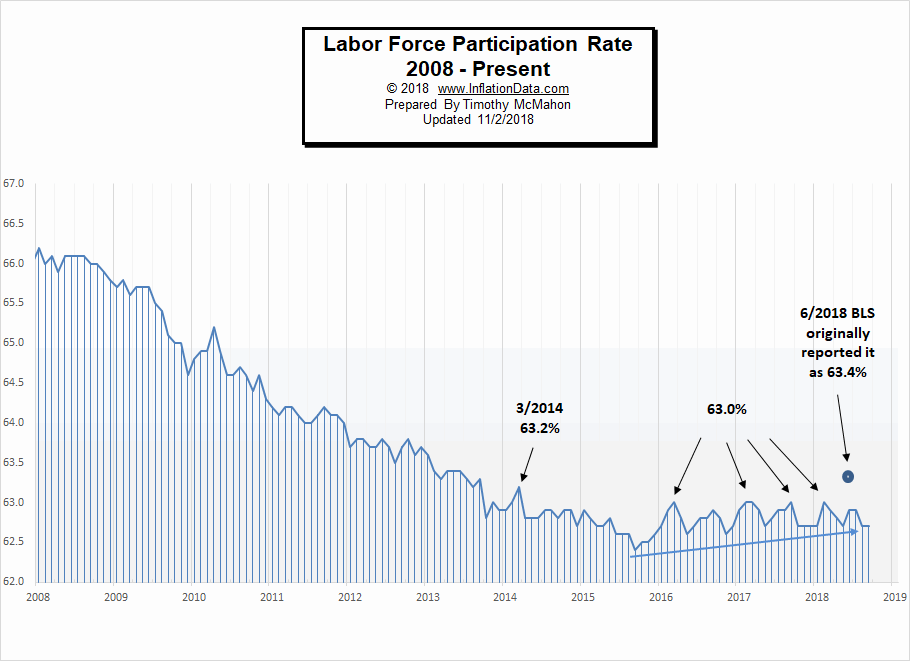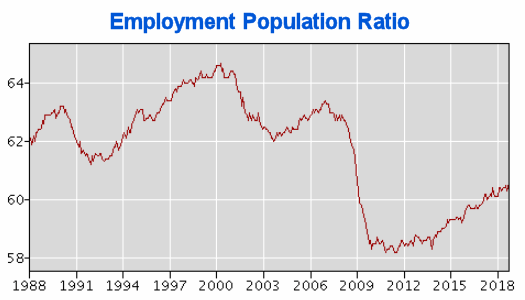![]() The U.S. Bureau of Labor Statistics (BLS) released their monthly unemployment survey results for October on November 2nd. Unadjusted U-3 and U-6 Unemployment is down again and “Seasonally Adjusted” Unemployment U-3 was 3.7% for the second month in a row. This is the lowest level since December 1969 when it was 3.5%. The lowest level reached in the 1968-1969 timeframe was 3.4% where it hovered from September 1968 through May 1969. The only other time that unemployment was this low since they began tracking unemployment in 1948 was briefly in 1948 and again in 1951-53.
The U.S. Bureau of Labor Statistics (BLS) released their monthly unemployment survey results for October on November 2nd. Unadjusted U-3 and U-6 Unemployment is down again and “Seasonally Adjusted” Unemployment U-3 was 3.7% for the second month in a row. This is the lowest level since December 1969 when it was 3.5%. The lowest level reached in the 1968-1969 timeframe was 3.4% where it hovered from September 1968 through May 1969. The only other time that unemployment was this low since they began tracking unemployment in 1948 was briefly in 1948 and again in 1951-53.
Employment is at an all time record 150.753 million the previous high was set in June 2018. Last month employment was 149.738 million so the actual increase in jobs was over 1 million, although the “Seasonally Adjusted” jobs increase was “only” 250,000. Even that was significantly higher than the projected 208,000.
Previous Record Low Unemployment
| Jan | Feb | Mar | Apr | May | Jun | Jul | Aug | Sep | Oct | Nov | Dec | |
| 1965 | 4.9% | 5.1% | 4.7% | 4.8% | 4.6% | 4.6% | 4.4% | 4.4% | 4.3% | 4.2% | 4.1% | 4.0% |
| 1966 | 4.0% | 3.8% | 3.8% | 3.8% | 3.9% | 3.8% | 3.8% | 3.8% | 3.7% | 3.7% | 3.6% | 3.8% |
| 1967 | 3.9% | 3.8% | 3.8% | 3.8% | 3.8% | 3.9% | 3.8% | 3.8% | 3.8% | 4.0% | 3.9% | 3.8% |
| 1968 | 3.7% | 3.8% | 3.7% | 3.5% | 3.5% | 3.7% | 3.7% | 3.5% | 3.4% | 3.4% | 3.4% | 3.4% |
| 1969 | 3.4% | 3.4% | 3.4% | 3.4% | 3.4% | 3.5% | 3.5% | 3.5% | 3.7% | 3.7% | 3.5% | 3.5% |
| 1970 | 3.9% | 4.2% | 4.4% | 4.6% | 4.8% | 4.9% | 5.0% | 5.1% | 5.4% | 5.5% | 5.9% | 6.1% |
Key October Employment and Unemployment Numbers
- Adjusted U-3 Unemployment- 3.7% unchanged from September down from 3.9% in August.
- Unadjusted U-3 Unemployment- 3.5% down from 3.6% in September and 3.9% in August and 4.1% in July and 4.2% in June.
- Unadjusted U-6 Unemployment- 7.0% down from 7.1% in September and 7.4% in August and 7.9% in July, 8.1% in June.
- Employment 150.753 million up from 149.741 million in September. (Yes over a Million more jobs!)
- October Labor Force Participation Rate 62.9% up from 62.7% in September. (Higher is Better)
See Current Unemployment Chart for more info.
The Differential between U3 and U6 Remains Near September 2006 Lows
Last month the differential between the unadjusted U3 and U6 (reached by subtracting U3 from U6) was at 3.5% and remains there for the 3rd month in a row.
See Current U-6 Unemployment Rate for more info.
Employment by Sector
The employment “bubble chart” gives us a good representation of how each sector of the economy is doing (employment wise). As we can see from the chart below there is not a single sector that is to the left of the zero line this month. This indicating that every single sector gained employees. The further further to the right on the chart the more employees they gained.
Utilities and Retail had the smallest gains increasing 1,200 and 2,400 respectively. The biggest gainer was Education and Health adding 44,000 jobs. Leisure and Hospitality was not far behind adding 42,000 jobs. Other big gainers were Professional and Business Services (+35,000) and Manufacturing (+32,000).
Average weekly earnings increased by $2.07.
Average weekly wages increased sharply from $939.78 to $941.85.
(See the table below for average weekly earnings and other details.)
How to read this chart:
Bubbles location on the chart tell us two things:
- Change in Employment Levels over the most recent month.
- Average Weekly earnings.
- The further to the right the bubble the larger the increase in the number of jobs.
- The higher up on the chart the larger the average salary.
Bubble Size tells us:
- Total Employment for the sector.
- Larger bubbles mean more people are employed in that sector.
Employment and Average Weekly Earnings by Industry for All Employees
October 2018, Seasonally Adjusted
| Industry | Monthly Increase | Average Weekly Earnings | Employment Level |
| Total Private Employment | 246,000 | $941.85 | 127,353,000 |
| Mining and Logging | 5,000 | $1,507.82 | 756,000 |
| Construction | 30,000 | $1,175.17 | 7,318,000 |
| Manufacturing | 32,000 | $1,106.09 | 12,785,000 |
| Wholesale trade | 9,100 | $1,196.20 | 6,017,200 |
| Retail trade | 2,400 | $583.97 | 15,896,400 |
| Transportation and Warehousing | 24,800 | $955.50 | 5,399,100 |
| Utilities | 1,200 | $1,726.10 | 552,500 |
| Information | 7,000 | $1,458.08 | 2,769,000 |
| Financial Activities | 7,000 | $1,324.13 | 8,609,000 |
| Professional and Business Services | 35,000 | $1,185.91 | 21,146,000 |
| Education and Health Services | 44,000 | $897.27 | 23,811,000 |
| Leisure and Hospitality | 42,000 | $420.47 | 16,410,000 |
| Other Services | 7,000 | $783.15 | 5,884,000 |
U-6 Unemployment
 Current U-6 Unadjusted Unemployment Rate for October 2018 is:
Current U-6 Unadjusted Unemployment Rate for October 2018 is:
7.0% down from 7.1% in September, 7.4% in August, 7.9% in July and 8.1% in June.
See Unadjusted U-6 unemployment for more info.
Employment
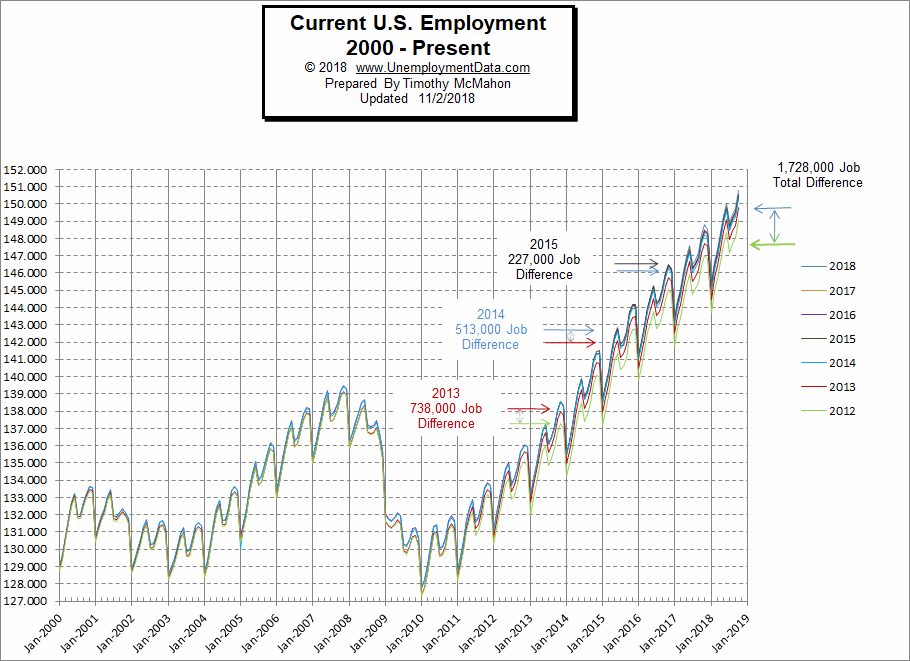
According to the BLS Commissioner’s report for this month:
“Total nonfarm payroll employment rose by 250,000 in October, and the unemployment rate was unchanged at 3.7 percent, the U.S. Bureau of Labor Statistics reported today. Job gains occurred in health care, in manufacturing, in construction, and in transportation and warehousing.”
Note: These are Seasonally adjusted numbers. Actual final employment numbers for September were 149.738 million. This month’s preliminary employment numbers are 150.753 for an actual increase of 1,015,000. Yes, that is over a million new jobs in one month. But the Commissioner is saying that it rose 250,000 more than average for the month of October.
Labor Force Participation Rate
The LFPR for October was up from August and September’s 62.7% to 62.9%.
Originally, the BLS reported that the June LFPR jumped dramatically to 63.4% exceeding 63.2% for the first time since 2014. But then they walked that back saying it was only 62.9% the same as July 2017 and July 2018. The LFPR for September, August and May was 62.7%, and in April it was 62.8%, March was 62.9%, February was 63.0%. (Higher is better).
See Labor Force Participation Rate for more information.
Employment Population Ratio
The index many people think of when they hear the term Labor Force Participation Rate might be better described by the Employment Population Ratio. This index shows the percentage of the entire population that is working. In many ways it is a better index than the LFPR or the Unemployment rate.
Here are some articles you might enjoy in case you missed them:
Read more on UnemploymentData.com.
- How to Impress Your Interviewer After the Interview
- Arkansas, California, Idaho, South Carolina, Texas and Washington Set New Unemployment Lows in September
- Here’s Why “Strong Jobs” Don’t Mean “Higher Stocks”
- Unemployment Reaches Lowest Point Since 1969
- 5 Types of Jobs That Are Perfect for When You Can’t Decide Which Degree to Pursue
From InflationData.com
- Did the Democrats Really Vote Against the Social Security Cost of Living Increase?
- September Annual Inflation Down to 2.28%
- Can Crypto Solve Venezuela’s Hyperinflation Problem?
- Cost of Living: LA and New York vs. The World
- What Impact (if any) Does Disruption have on Inflation?
- Debt and Inflationary Pressures: A Lesson in Economic Interactivity
- What Impact (if any) Does Disruption have on Inflation?
- Inflation Risk
From Financial Trend Forecaster
- How Free is Your State?
- Oil Price Rally Boosts Electric Car Sales
- $100 Oil Is A Distinct Possibility
- Do the FED’s Interest Rates Affect the Stock Market?
- Technological Solution to 100 Year Old Oil Problem
From Elliott Wave University
- 1987 vs. 2018
- Bitcoin Breakdown May Push Prices Below $5000
- The Psychology of Volatility
- What is the Up/Down Volume Saying About the Current Market?
- This Doesn’t Happen in Bear Markets
From OptioMoney.com
- Avoiding Costly Disasters: 4 Common Home Repair Jobs for Fall and Winter
- 5 Ways to Reduce Your Business Credit Risk
- How Does a Surety Bond Differ from Insurance?
- When is the Right Time to Buy Life Insurance?
- 4 Things Home Buyers Shouldn’t Do During the Mortgage Process
- How to Survive Bankruptcy
From Your Family Finances

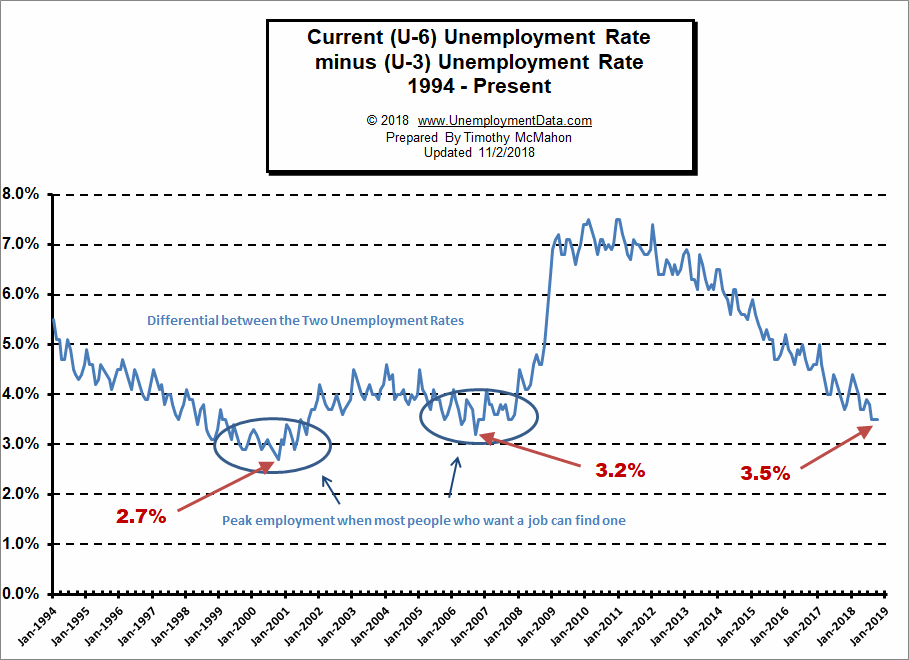
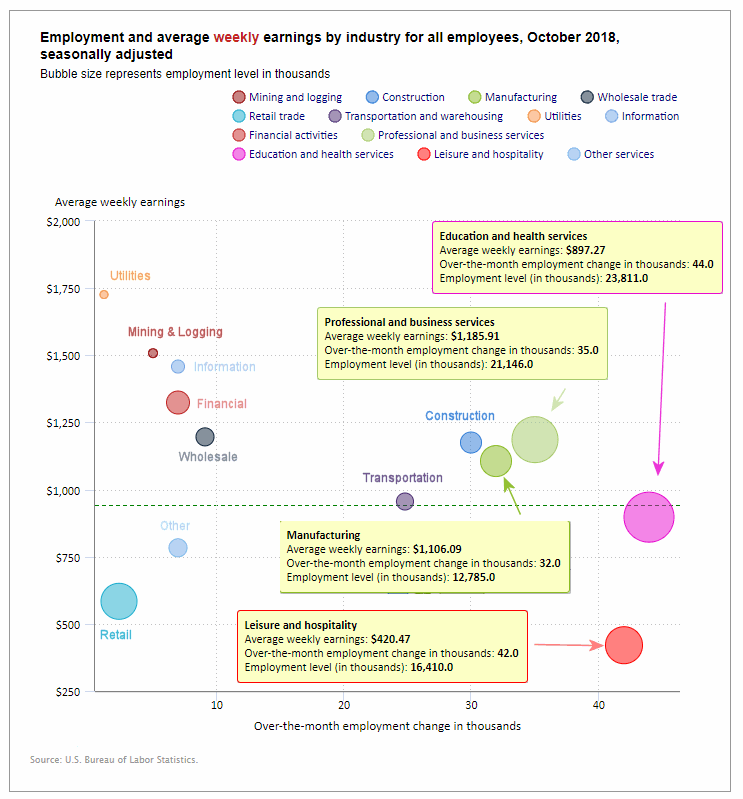
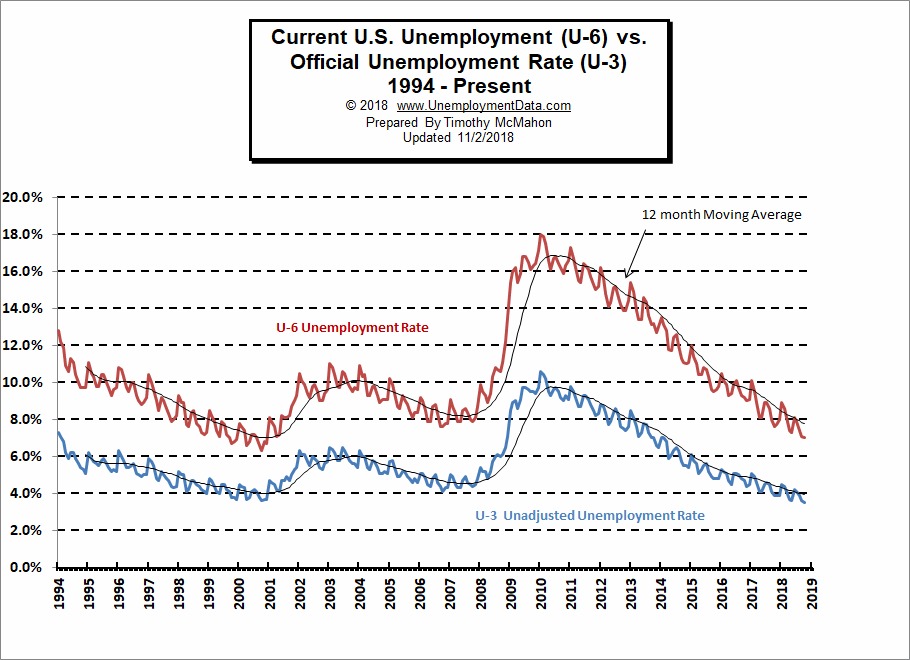 Current U-6 Unadjusted Unemployment Rate for October 2018 is:
Current U-6 Unadjusted Unemployment Rate for October 2018 is: